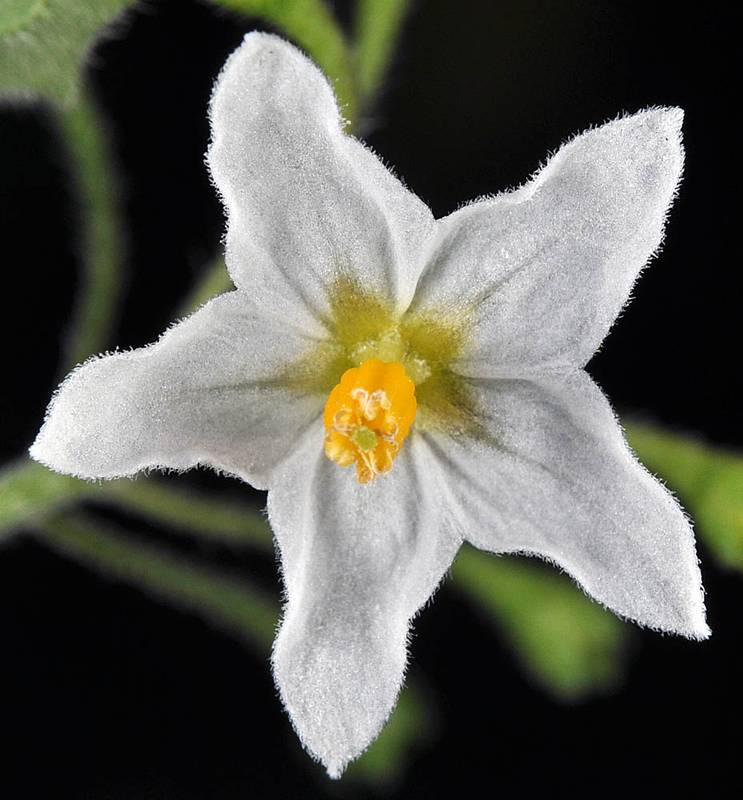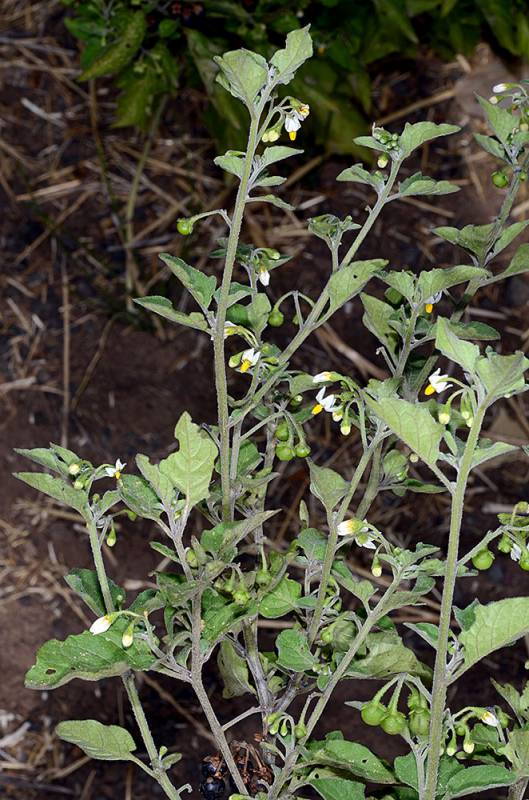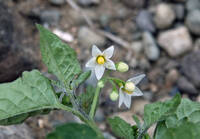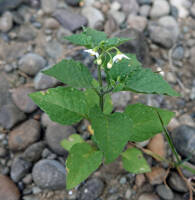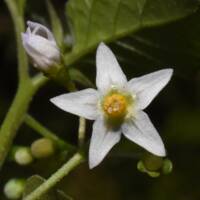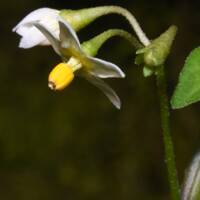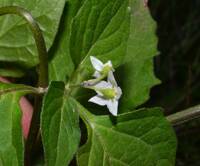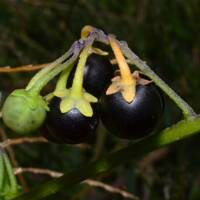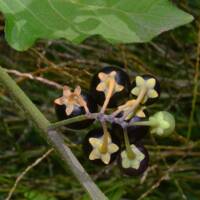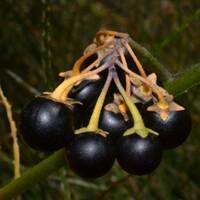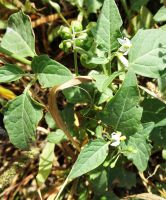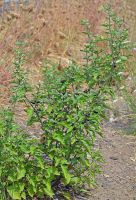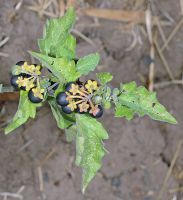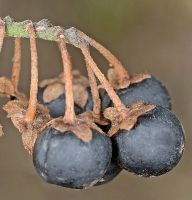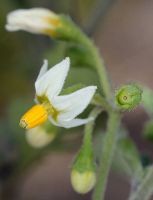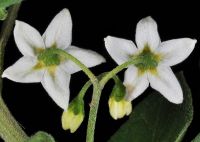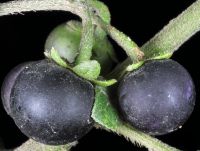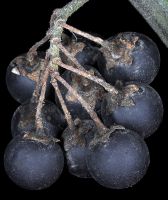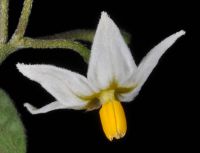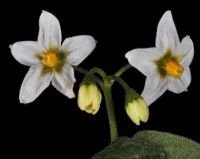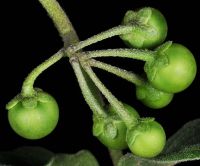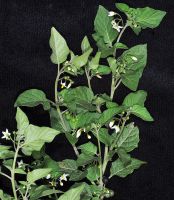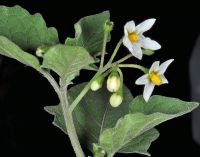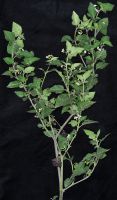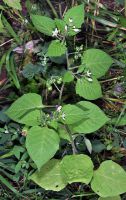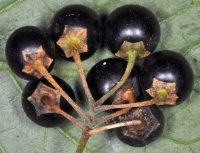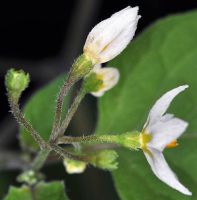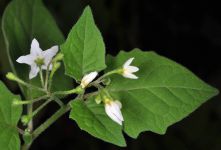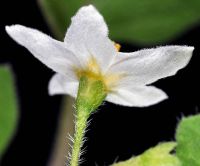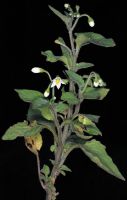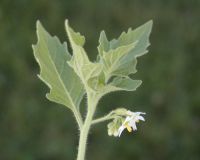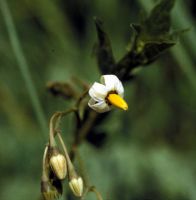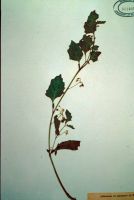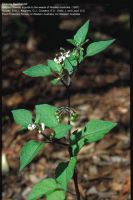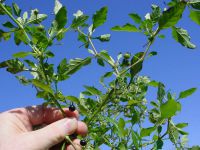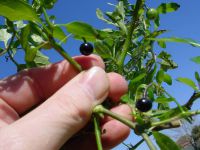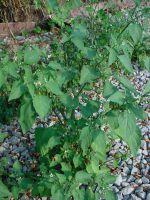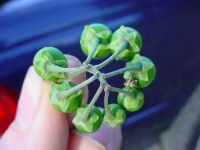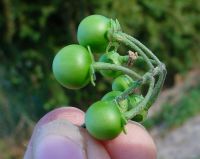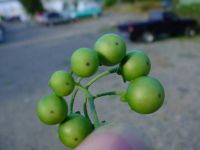Distribution: Occurring on both sides of the Cascades crest in Washington; Alaska to California, east in scattered locations across North America to the Atlantic Coast.
Habitat: Fields, roadsides and other disturbed sites, especially in moister areas; often in urban and suburban areas.
Flowers: July-November
Origin: Introduced from Europe
Growth Duration: Annual
Conservation Status: Not of concern
Pollination: Bumblebees, bees, flies
Mostly glabrous annual from a taproot, the branching stem 1.5-6 dm. tall.
Leaves petiolate, the blade ovate to deltoid, 2-8 cm. long and 1-5.5 cm. wide, nearly entire or with a few blunt teeth.
Inflorescence of numerous ascending, few-flowered peduncles, 0.5-2.5 cm. long, attached along the stem or opposite the leaves, the pedicels drooping, clustered; calyx 2-3 mm. long, the 5 lobes unequal; corolla nearly rotate, 5-lobed, white or faintly bluish, 5-10 mm. wide, the lobes reflexed; stamens 5, the anthers conspicuous, yellow; style solitary; ovary superior.
Fruit a black berry, globose, 8 mm. thick.
Publication: Sp. Pl. 1: 186. 1753.
-
ssp. nigrum – European black nightshade
 Occurring on both sides of the Cascades crest in Washington; Alaska to California, east in scattered locations across North America to the Atlantic Coast.
Occurring on both sides of the Cascades crest in Washington; Alaska to California, east in scattered locations across North America to the Atlantic Coast.
PNW Herbaria: Specimen records of Solanum nigrum in the Consortium of Pacific Northwest Herbaria database
WA Flora Checklist: Solanum nigrum checklist entry
OregonFlora: Solanum nigrum information
E-Flora BC: Solanum nigrum atlas page
CalPhotos: Solanum nigrum photos

